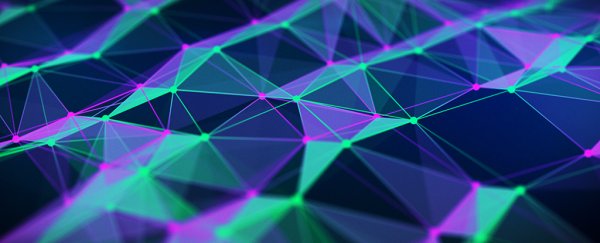An exotic and totally new state of matter called a quantum spin liquid has been hypothesized for decades, and now scientists have been able to observe it in a laboratory for the first time.
The 'liquid' part refers to electrons that are constantly changing and fluctuating inside a magnetic material at low temperatures. Unlike regular magnets, in this case the electrons don't stabilize or settle into the structured lattice of a solid as they are cooled.
The 'quantum spin' refers to orientation of angular momentum (up or down) carried by particles, which are entangled in pairs with opposing spins. Now that the state has been observed for the first time, it's hoped that the discovery can advance progress in the development of quantum computers.
"It is a very special moment in the field," says quantum physicist Mikhail Lukin, from Harvard University in Massachusetts. "You can really touch, poke, and prod at this exotic state and manipulate it to understand its properties… it's a new state of matter that people have never been able to observe."
Normal magnets feature electrons whose spin is orientated in the same direction either up or down, which is what generates magnetism.
In quantum spin liquids, a third electron is introduced, so while two opposing spins will stabilize each other, the spin from the third electron throws out the balance. It creates a 'frustrated' magnet where the spins can't all stabilize in one direction.
To produce their own frustrated lattice pattern, the team used a programmable quantum simulator built in 2017. The simulator uses a quantum computer program to hold atoms in custom shapes using lasers – like squares, triangles, or honeycombs – and can be used to engineer different quantum interactions and processes.
The simulator uses tightly focussed laser beams to arrange atoms individually, and by arranging the atoms of rubidium in a triangle-patterned lattice the researchers were able to produce a frustrated magnet with properties of quantum entanglement – where changes in one atom are matched in a second entangled atom.
The connections between the atoms indicated that a quantum spin liquid had indeed been created.
"You can move the atoms apart as far as you want; you can change the frequency of the laser light; you can really change the parameters of nature in a way that you couldn't in the material where these things were studied earlier," says quantum physicist Subir Sachdev, from Harvard University.
"Here, you can look at each atom and see what it's doing."
Quantum computers are built on quantum bits or qubits, and it's hoped that quantum spin liquids will help in the development of topological qubits: qubits that are better protected against outside noise and interference.
For a quantum computer, that's hugely important. These systems can be very delicate, and getting them working for extended periods of time without errors is one of the biggest challenges that scientists are working on.
Now that quantum spin liquids have been spotted for the first time, it should help in figuring out how to make qubits as robust as possible. There's now a lot more to explore, the researchers say.
"Learning how to create and use such topological qubits would represent a major step toward the realization of reliable quantum computers," says quantum physicist Giulia Semeghini from Harvard University.
The research has been published in Science.
